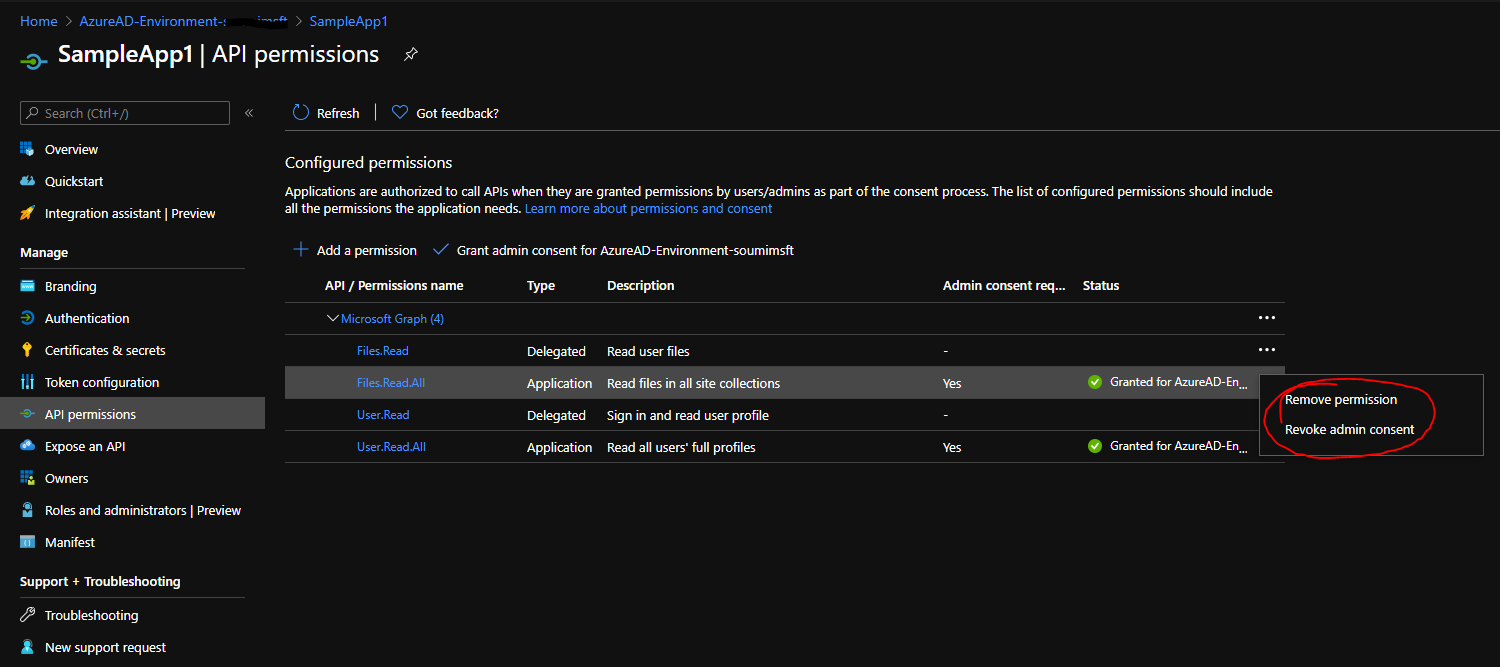Hi @Idan Gazit , thank you for reaching out. Before getting to the answer to the above query, let me share some details about the application structure in AAD. When you try to register an application in AAD, it creates two objects in it, one called the Application Object and the other is called the Service Principal Object. Now the permissions to any application are added, gets added in the application object, and once the user or admin provides consent to those permissions that consent to the permission gets recorded in the service principal object of that application. [refer to the screenshot below]

When you create a multi-tenant application and share it with other tenants, and when they access your application and start using it, a service principal object gets created in their own tenant, which holds the record of the consents being provided by users of their organization.
Now coming to your query, where you wanted to understand if you can revoke the admin consent/ user consents from your own tenant for a multi-tenant application, the answer to that is no, you cannot do that as the consents get registered in the tenant where the user belongs and the consents on the Service Principal Object (as shown in the screenshot above) cannot be deleted or revoked.
For deleting/revoking an admin consent/user consent, you would need to `do that through the application object in the App Registration blade, where you have added actual permissions. [refer to the screenshot below]

Hope this helps.
Do let us know if this helps and if there are any more queries around this, please do let us know so that we can help you further. Also, please do not forget to accept the response as Answer; if the above response helped in answering your query.